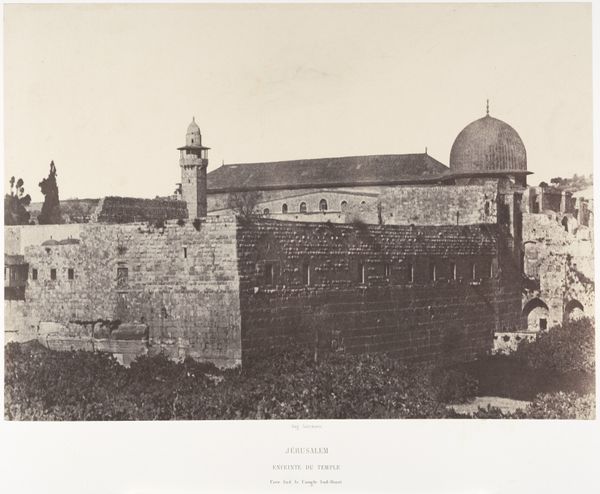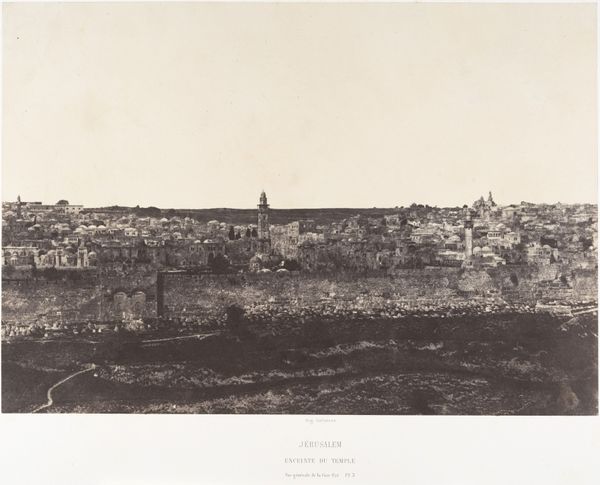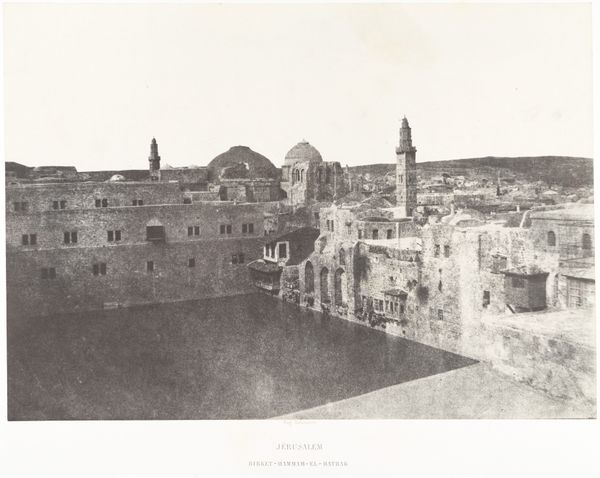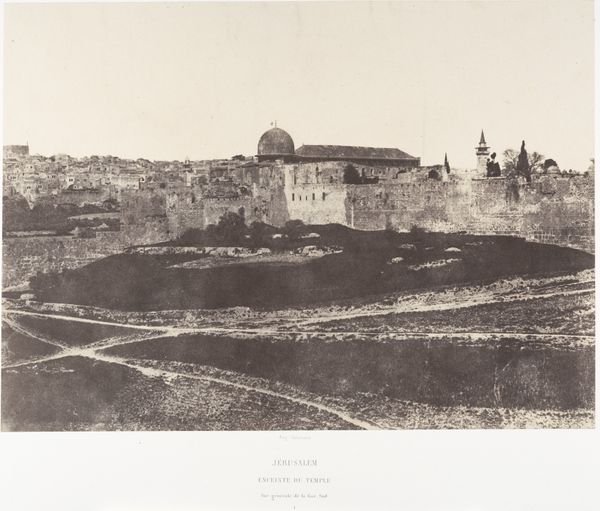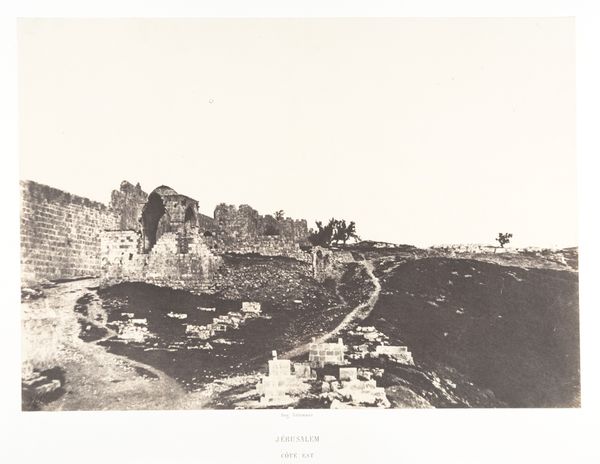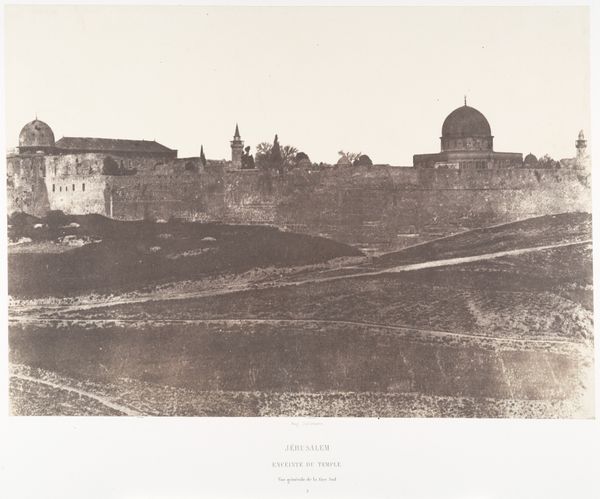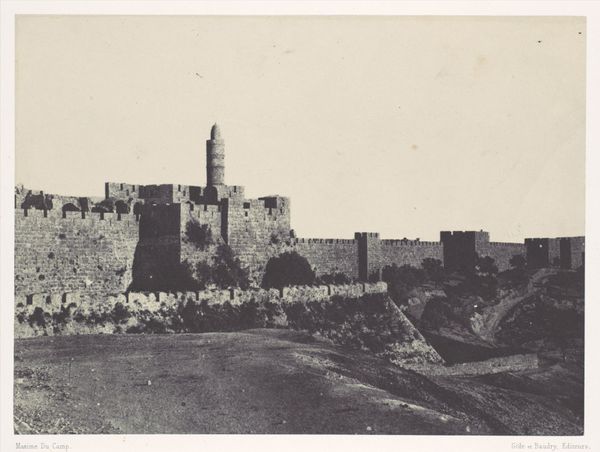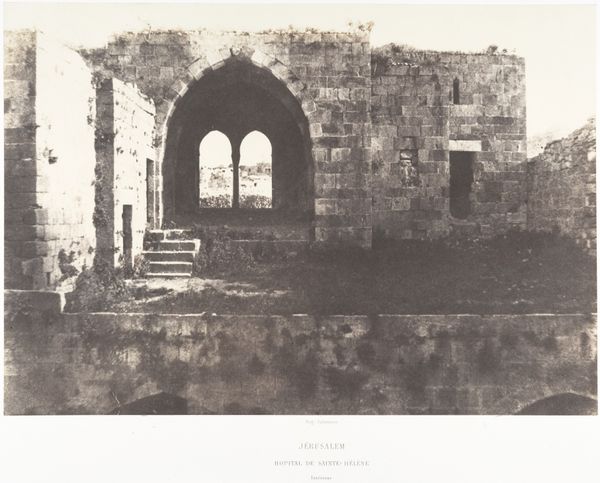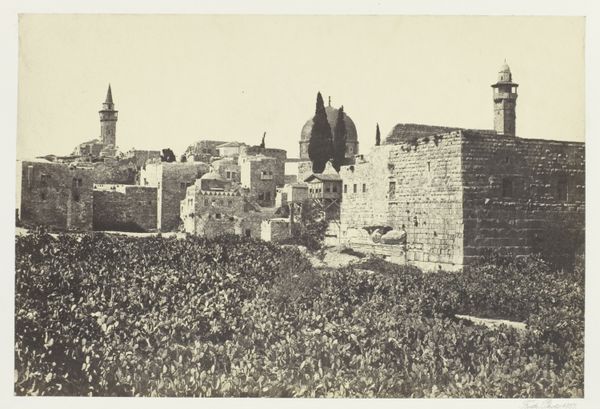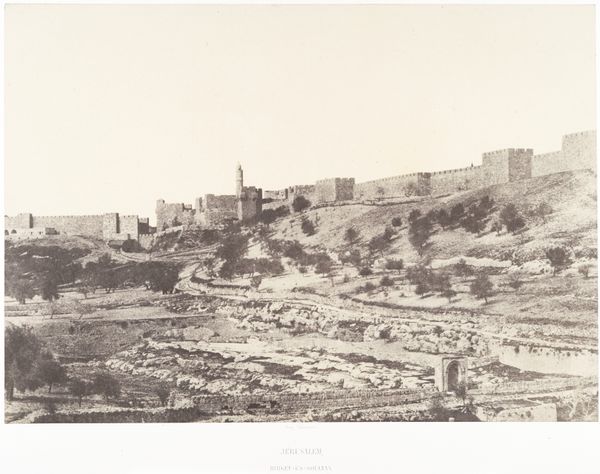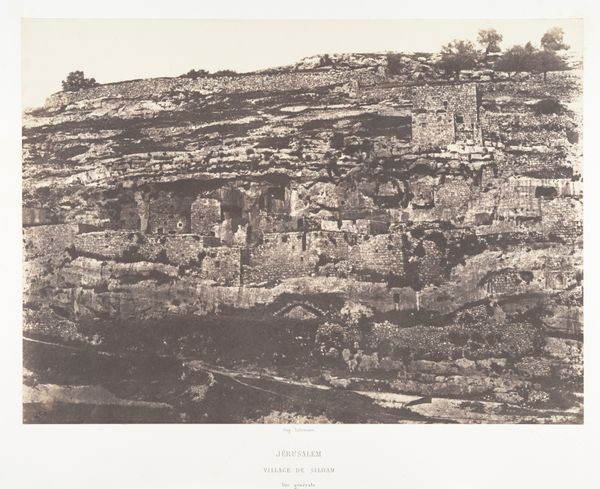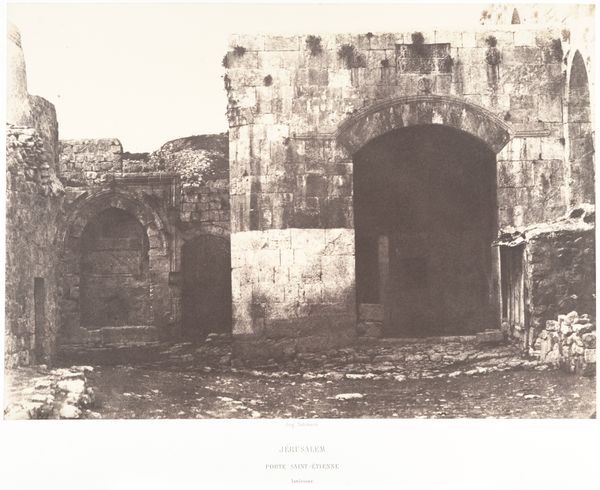
Jérusalem, Enceinte du Temple, Mosquée El-Aksa, angle Sud-Ouest 1854 - 1859
0:00
0:00
daguerreotype, photography, architecture
#
landscape
#
daguerreotype
#
photography
#
islamic-art
#
architecture
Dimensions: Image: 23.1 x 32.6 cm (9 1/8 x 12 13/16 in.) Mount: 44.6 x 60 cm (17 9/16 x 23 5/8 in.)
Copyright: Public Domain
Editor: We're looking at Auguste Salzmann's "Jérusalem, Enceinte du Temple, Mosquée El-Aksa, angle Sud-Ouest," a daguerreotype from the late 1850s. It depicts the Al-Aqsa Mosque in Jerusalem, captured in monochrome. I’m struck by its stoic and imposing quality. How do you read this image, especially considering its historical context? Curator: The choice of the daguerreotype in this era speaks volumes. Photography, still a relatively new medium, takes on the aura of objective truth. Salzmann's work gains significance when viewed as part of the 19th-century fascination with the 'Orient,' especially in relation to European colonial ambitions. What stories do you think this seemingly straightforward architectural photograph might conceal? Editor: I suppose the way it’s presented, like a document or survey… It almost feels like claiming the land through visual representation. Is it about power, then? Curator: Precisely! Photography provided a supposedly ‘unbiased’ way to record and therefore control knowledge about distant lands. Who controlled the photographic process, who funded these expeditions, and what purposes did these images serve back in Europe? The aesthetic appeal intertwines with power dynamics. Does that alter your initial impression? Editor: Definitely. I now see the image as less about the inherent beauty of the mosque and more about how it's being presented to, and consumed by, a Western audience. I'd not considered the political element so strongly before. Curator: Seeing art as shaped by such social and political undercurrents, rather than as isolated masterpieces, adds invaluable depth. A powerful image, indeed, precisely because of the questions it provokes regarding image making and power. Editor: I agree, I learned so much from looking at this daguerreotype with your insight. Curator: And I’m reminded of how vital it is to look at images through different lenses to appreciate their historical and political complexity.
Comments
No comments
Be the first to comment and join the conversation on the ultimate creative platform.
